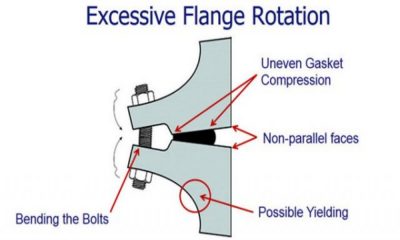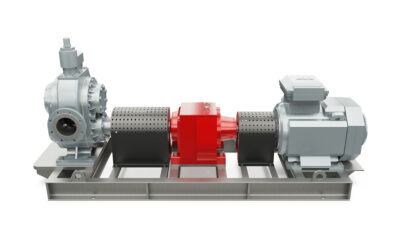Gearbox
Main causes of gearboxes failures

In a world of optimization and digitization where factories are trying to reduce costs and downtime, the identification of basic gearbox failures can help you to save money and precious time so let the repair shop and service team become a key part of your optimization process.
With almost 50 years of years in the design, development, production and servicing of gearboxes and power transmission solutions, I-MAK’s experience has produced over a million possible configuration of its products implemented in thousands of applications. As a result, and while closely communicating with customers and end users we identified 3 main reasons for gearboxes failures.
1. Alignment of the gearbox on the application
This first cause of gearbox failure is purely mechanical, gears being designed to work in a certain configuration and backlash settings for each gear tooth, that when misaligned can cause a concentration of loads on a part of the gear, housing, bearings or other weaker part of the gearbox and induce premature failure. The identification of misalignment can be done during the maintenance period throughout the lifetime of the gearbox. Before failure, the healthier way to process is to ensure the right mounting of the gearbox during the installation in a new application or after the servicing of some of the machine’s components. We also advice a regular control of the gearbox alignment, our service team is controls this alignment during our regular visits with end users that signed an I-MAK Service plus agreement, securing an early identification or future failures.
2. Lubrication of the gearbox
Most of I-MAK’s gearboxes are supplied with high quality lubricant oil adapted to the type of application, environment and mounting configuration. As the manufacturer, IMAK calculates the right quantity and defines the right type of oil to ensure an ideal lubrication for both gears and bearings. The bath and splash lubrication configurations allow the right spread of oil in the gearbox, allowing the oil to create a thin film on the gears. This thin layer of oil prevents a metal to metal contact between the gears during their engagement. During the gearbox lifetime the oil quantity and quality can change depending on the applications and regular service intervals. Sealed and protected from external pollutants, that can affect the oil quality is a good method to ensure the health of the gearbox, a yearly oil change is recomended to allow for optimal lubrication. During the oil drain a quick analyse of the oil quantity, colour, presence of external elements, can give key indicator of the gearbox health and conditions. Gearboxes working in harsh condition can lose significant quantity of oil during their lifetime, causing a lack of lubrication of the primary gears and irreversible damages.

3. Overload and operating mistakes
Often exposed to harsh working condition, the gearboxes also suffer from overload and operating mistakes. Gearboxes are initially supplied with the right configuration and service factor to offer optimal working and enhanced performance. Yet the working conditions at the end user facility can differ from day to day and sometimes grow to extreme for the gearboxes, in facilities like; water treatment plants, bulk material producer and recycling companies. These applications are often the ones imposing the hardest working conditions to the gearboxes. Exposed to external conditions these operators are regularly forced to stop their operation in emergency due to rain, electrical outages, feeder overloads etc. During these emergency stop events, heavy loads are applied to the output shafts, torque arms and backstop devices. Fully loaded a conveyor, mixer or shredder is demanding an extra effort to the geared motors until it gets to the requested operating speed. Soft start devices and adapted automation can reduce the overload and mitigate the efforts made by the gearboxes. Unfortunately, it is hard to identity a damaged gearbox in such noisy environment, at the same time the gearbox rarely shows noise or vibration difference until it is too late. At this stage the operating temperature of the gearbox remain a good factor to identify potential failures that sometimes take years to appear.
Although gearbox failures cause are not limited to these 3 causes, applying these basic advice could help you to save thousands of dollars and precious hours. We also invite you to consult our I-MAK Online service team, a unique online support service available in 5 different languages 24h/7.
-

 Industrial Hardware and Machine Parts9 years ago
Industrial Hardware and Machine Parts9 years agoThe necessity of bolted flange connection training
-

 Drive systems6 years ago
Drive systems6 years agoIntelligent frequency inverters for digital production
-

 Motors9 years ago
Motors9 years agoNew generation of hollow shaft motors
-

 Industrial Hardware and Machine Parts8 years ago
Industrial Hardware and Machine Parts8 years agoABB and Formula E partner to write the future of e-mobility
-

 Industrial Hardware and Machine Parts8 years ago
Industrial Hardware and Machine Parts8 years agoRexnord adds to its Autogard Torque Limiters with the XG Series
-

 Motors9 years ago
Motors9 years agoZF Technology on the Winners’ Podium of the Dakar Rally 2017
-

 Gear drives8 years ago
Gear drives8 years agoKlingelnberg at control 2018: Tactile and optical measurement on one machine
-

 Motors8 years ago
Motors8 years agoGet a first-class ticket to productivity
-

 Motion control8 years ago
Motion control8 years agoWhere the robots come from?
-

 Motion control8 years ago
Motion control8 years agoRexnord to Acquire Centa Power Transmission
-

 POWER TRANSMISSION TECHNOLOGIES5 years ago
POWER TRANSMISSION TECHNOLOGIES5 years agoEUROTRANS Board meets for its first session in 2021
-

 Industrial Hardware and Machine Parts9 years ago
Industrial Hardware and Machine Parts9 years agoCustom hobbing tool enables 45-degree angles

















